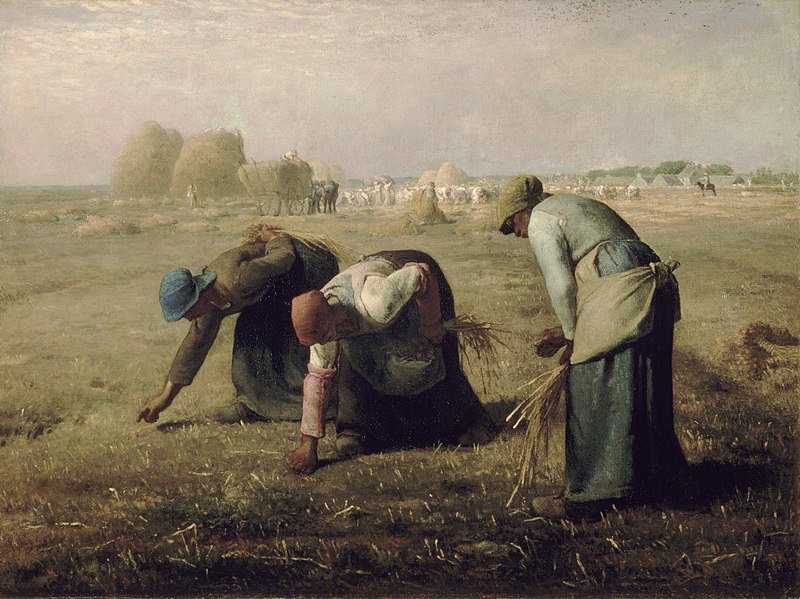Aharon Ariel Lavi
The current labor market is characterized by increasing high volatility. This means that a person’s chance of entering a particular career around the age of twenty and enduring in that
Career for about fifty years until retirement is dwindling, and this trend is expected to continue. Apparently, the Covid-19 pandemic has only exacerbated the trend. A wave of resignations is already visible around the world, resulting from a renewed self-search, a desire to balance life and work, an attempt to improve employment and wages, a desire to move to a more interesting profession and the like. The phenomenon has even been dubbed “The Great Resignation,” a term coined by Professor Anthony Klotz of the University of Texas.
Will you offer us a hand? Every gift, regardless of size, fuels our future.
Your critical contribution enables us to maintain our independence from shareholders or wealthy owners, allowing us to keep up reporting without bias. It means we can continue to make Jewish Business News available to everyone.
You can support us for as little as $1 via PayPal at office@jewishbusinessnews.com.
Thank you.
With all due caution, I assume that in the coming generation, at the very least, we will see increasing volatility in the job market, due to three main reasons:
Technological changes: the development of artificial intelligence and robotics, which will make countless professions obsolete, and at the same time create new professions.
Change of preferences: Millennials not only switch jobs in unprecedented frequency, but they also switch for different reasons than before: opportunity to learn and develop, relationship with the manager, and flexibility in the workplace. Over half of them report that the first-rate consideration that affects their work is their personal values and morals.
Spatial changes (globalization): Competition over talented human capital opens employment opportunities for the individual in other cities and countries. As the transportation and media revolutions make progress, and remote work habits acquired during the Covid era, people will increasingly be able to stay in their physical place.
Thus, a large proportion of us are heading towards more frequent and significant shifts between professions and careers. This is going to be much more difficult in fact, as the market demands are also changing.
Not all of us are adapters of technological and economic changes. Adaptability is a real competitive advantage in the postmodern economy, both for individuals and companies.
Those who fail to adapt will often find themselves completely thrown out of the employment cycle and fall into chronic unemployment. They will pay a high price for it both financially and in terms of their self-image social status, but society as a whole will also pay a price for it, since those who drop out of the production cycle become a burden on it.
Shmita and Yovel – Cycles of Correction
Shmita, the sabbatical year, is one of the most radical social ideas in Jewish tradition. Basically, it requires that every seventh year we leave our land fallow, and live only off what grows naturally, and at the end of the year all debts are to be remitted. In addition, once every seven Shmita cycles (49 years) the fiftieth year is called a “Yovel” (Jubilee). In the Yovel all real estate transactions of the last 49 years expire, all lands return to their original owner, and all slaves are released.
In an information-based global economy all of this is irrelevant to most of us, as we are not farmers, but I want to touch upon the core ideas of Shmita and Yovel and see what we can learn from them, not despite the fact these are millennia old ideas, but rather precisely because of that.
Contrary to popular belief, according to which Shmita was (and could be again) some sort of a utopian sabbatical year, I argue that Shmita was in fact a pre-planned crisis. It is an educational mechanism against humankind’s over-optimism, and it comes to remind us of a simple, yet important, truth: crises aren’t just a part of life, but to a large extent one of the mechanisms which enable their progress. Instead of repeatedly visioning a crises-free world, we would be better off integrating preplanned and timed crisis-like cycles.
The Yovel adds another layer to this idea, and in order to understand it we need to understand the context in which it was created.
Historically, the mechanism that led to enslavement and sale of assets was temporary crop damage that led to money borrowing, which evolved to mounting debt which ended in insolvency. There were no bankruptcy laws or protections back then, hence the insolvent person had to sell his or her land to cover the debt.
If that wasn’t enough, they had to sell themselves into slavery. The first example of this in the Torah is the story of Joseph, or rather the story of the long-term enslavement of the Egyptians following the temporary crisis that befell them, which was also related to the number seven (seven bad years which followed seven good years).
The core idea of the Jubilee is, then, breaking the connection between a temporary and random economic crisis and eternal enslavement and loss of property. It is not only a loss of property, since land in ancient times was not a purely economic means but also part of a person’s identity and heritage.
Random Crises with Long-Term Consequences
What is the corresponding mechanism, then, in the modern economy in which random fluctuation can become a long-term bond? Indeed, even today the real estate market is a major market, but most of the real estate used as means of production today is in the form of offices and industrial facilities, and those usually serve either the firm that built them or renters and subletters, and therefore returning them to their original owners is rather meaningless.
Considering this, I propose we look at another type of capital – human capital – the most important mean of production today.
The essential difference between this type of capital and capital in the form of real estate or machinery is that human capital, in the form of years of education and work experience, cannot be traded. It also cannot be mortgaged and cannot be passed on as inheritance. However, as I explained above, in the modern economy it becomes more and more frequent a situation when even though training and experience themselves continue to exist in one’s mind, they lose their relevance due to changing market conditions.
In such a situation a temporary and random crisis can indeed lead to material degradation (followed by mental and spiritual one). The result of such a crisis can indeed be a form of slavery in the modern sense, which can be manifested in the form of chronic unemployment, or intermittent entry and exit from the labor market, or even work inconsistent with one’s skills, professional experience, and desire.
Adaptive and frantic people skip relatively easily from one stage to another, but for the majority who are not, there is room to offer a simple model of letting go and moving to the next vocational chapter.
A pre-planned crisis will reduce the scope and impact of an unplanned one. To a certain extent, a proper manifestation of this will be an extension of the sabbatical year model used in educational and academic vocation throughout the market, for those who wish to do so.
This model has become prevalent worldwide and was clearly inspired by Shmita, since the early days of colleges in the United States. The model was first introduced in the sabbatical year proposed by Harvard University in 1880. Charles Elliott, then university president, started it after several failed attempts at professional vacations. The other leading academic institutions in the United States soon followed Harvard, and by the 1920s a similar mechanism had already been established in almost all of them.
The principles of the sabbatical year were the promotion of education and training of the professors while paying a full or partial salary, given after a certain term of work at the institution before the first sabbatical year. They were perceived as a future investment in the quality of human resources available to the institution, and not as a vacation to promote employee welfare.
What if we extend this model to other industries and professions while creating a taxation mechanism that encourages retirement savings instead of planning to rely on governmental support?
This mechanism will allow some of the retirement funds to be redeemed once every six years to enable a year (or less) of rest and professional training, preparing the person for his or her next productive phase.
Simultaneously, for every year redeemed by the employee, an additional year of work will be added after the official retirement age, such that at the end of the day, on average, there will be no personal actuarial deficit and the retirement age will rise to a sustainable level which will prevent the pension and social security systems from collapsing.
These training periods could be points of transition between professions in which the employee has exhausted themselves, or which have simply become obsolete due to changes in the market, towards professions in which his or her output, both for them and society, will be greater. Thus, lowering the risk for people getting kicked out of the workforce for life.
Yes, I know that while there are many who would love to implement such a mechanism in their lives, there are only few who believe this can happen. However, let us consider the following: the Roman philosopher Seneca was one of many thinkers in the ancient world who rebuked the Jews, belittled them, and even hated them because of their weekly day of rest, which for him was nothing but evidence of their laziness. What would Seneca say, if he knew that the idea of the weekly day of rest had become a fundamental characteristic of all the peoples who inherited his Empire. Not just one day, but two.
Ideas are an elusive thing, and no one knows which idea will spread, materialize, how and when, and which will remain only in writing. Shmita is an idea, a very powerful one. And who knows, maybe in 50 years, or 500 years, it will be obvious that every person needs rhythmic periods of renewal and learning in life, not just academics.
Appendix – A Proposal for a Personal Work Cycle
1 – Tax benefits for pension funds and training fund provisions will increase, in order to encourage more people to save larger amounts over time. The justification for this, from a public point of view, is that the growing volatility in the job market is a kind of a market failure, and the costs of failing to treat it will fall on society as a whole (which will have to subsidize those who dropped out of the labor force and become chronically unemployed). This cost will be much higher than the loss of tax revenues (meant to fund public investments as well).
2 – Once every six years, every employee could choose to go out for a period of training and adjustment of three to twelve months, under conditions similar to the current maternity leave:
- Employer-employee relations will be frozen.
- The employer will have to return the original employee to his or her job if, and only if, three conditions have been met cumulatively:
- The employer hired an alternative employee for that period, thereby proving that the position was still needed and yielded value to the employer.
- The employee who went on a training period chose to return to work.
- This choice was made at the end of the freeze period whose length was determined and agreed in advance between the parties (unless both parties agree to shorten or extend it).
If it is proven that the position left by the employee has indeed exhausted itself and is no longer needed, due to certain changes in the economy as explained above, the freeze could become permanent lay off under the conditions for lay off and unemployment benefits stipulated in the agreement between the parties, and according to the law.
3 – Since this is an individual sabbatical year, and not a collective one, which means that not everyone goes on sabbatical at the same time, employees in similar fields will be able to cover for each other during the sabbaticals so that the firms’ activities are not harmed.
4 – During the training period, the employee will be able to support him or herself using the training fund they have accumulated or using the pension fund or by combining the two.
5 – In the case, the employee chooses the pension route, then the period used will result in the postponement of the retirement age for an identical period. For example, under the current retirement age for men, an employee who has completed six months of training and adaptation using solely his pension fund resources, could retire only at the age of 67.5 instead of 67.
These differences will accumulate over the years of work, of course, so that if the same employee takes seven six-month break periods each, over 49 years of work (starting at age 21 or so), he will eventually retire at age 70.5 instead of age 67.
This way an actuarial deficit in the pension fund will be avoided, which may harm the pension upon retiring, and will also prevent the collapse of the national old-age allowances system, as described above, without the need to raise taxes.
Given the lengthening life expectancy and the decrease in the demand for strenuous physical labor, this situation is possible for most people.
6 – It is likely that at a young age the training and adaptation year will have to be based mainly on the training fund, which accrues faster, compared to the pension fund that will be filled more slowly. From the income in that year, it will not be necessary to deduct payments to the pension fund, since its use will be offset by postponing the retirement age.
7 – Using the training fund will not affect the retirement age as this is its original purpose.
8 – The employee will be able to use the period of training and adaptation for general rest and accumulation of strength, but will also be required to a certain extent of study hours, professional training, etc. at the expense of his or her training fund with a certain state contribution.
The justification for this contribution is that this mechanism will minimize market failure damages whose costs will be inflicted on society as a whole. In addition, there will be no need to allocate new resources for such a program, but rather divert resources from existing vocational training and employment programs.
9 – The state will not carry out vocational guidance and training programs on its own, but will only set the standard for accepting programs into the fundable basket and let the market create the programs itself according to changing needs and demands.
10 – At the end of the period, the employee will be able to return to his or her original workplace (provided the above conditions) or continue to another and more adapted workplace depending on the training and adaptation they have performed.
If they decide to return, then the employer will get back a fresher, more talented employee with a higher motivation to continue, which will yield additional value. If they choose to move on, then the employee will use their capabilities more efficiently for society elsewhere (then the temporary employee hired to replace them will become permanent). Either way, the benefit for the whole economy, i.e. the productivity of workers, will increase.
11 – This mechanism can also include independent business owners under a framework of sub-mechanism of voluntary mutual cover-up. For example, two architects in similar fields could coordinate the training periods in advance so that they will not overlap, and while one architect goes into training and adaptation the other architect will fill his or her place and vice versa.
A similar mechanism to the one presented above can be developed also with less or no governmental intervention if employers and employees agree on such terms in advance.
The writer Aharon Ariel Lavi is a Rabbi, a serial social entrepreneur, and a thinker who believes Judaism can inform all walks of life; Co-founder of the Israeli umbrella organization of intentional communities, and of Hazon’s Hakhel Jewish Intentional Communities Incubator. His forthcoming book, “Seven”, deals with the economic and social aspects of the Shmita year. Aharon Ariel Lavi










